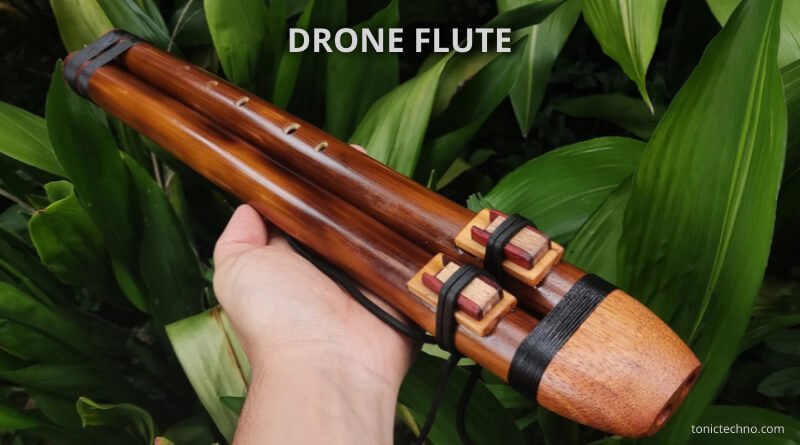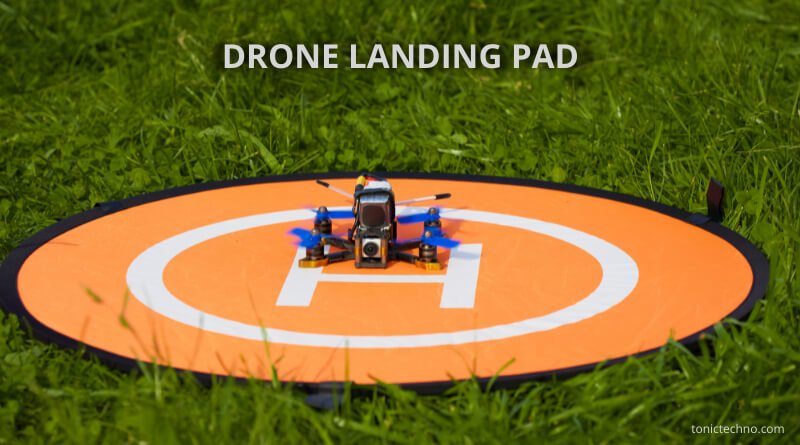Embarking on the thrilling journey into the world of drones, the heartbeat of my airborne adventures has undeniably been the drone controller. As someone deeply immersed in unmanned aerial systems, wielding a controller feels akin to holding the very wings of innovation. Picture this – a handheld marvel that translates my every command into seamless flight manoeuvres. In this blog post, I’m excited to share my seasoned insights into the pivotal role that a drone controller plays in transforming a simple flight into a symphony of aerial artistry. Join me as I unravel the magic and finesse these controllers bring to the skies, turning each flight into a narrative of expertise and exhilaration.

Types of Drone Controllers
Unraveling the World of Drone Controllers
Handheld Drone Controllers
Definition and Features: Handheld drone controllers are compact devices that directly link the pilot to the unmanned aerial system. These controllers boast an ergonomic design, often equipped with joysticks, buttons, and a responsive interface, enabling precise control over the drone’s movements. With intuitive features, they empower recreational drone enthusiasts to effortlessly navigate the skies.
Applications in Recreational Drones: Tailored for hobbyists and enthusiasts, handheld controllers find their niche in recreational drones. Whether executing breathtaking aerial stunts or capturing scenic landscapes, these controllers offer an accessible and user-friendly experience. Their simplicity and versatility make them ideal companions for those seeking an entry point into the world of drone piloting.
Ground Control Stations
Overview of GCS: Ground Control Stations (GCS) represents a more sophisticated facet of drone control. These comprehensive systems provide a centralized hub for managing and monitoring drones. GCS typically includes hardware and software, offering a bird’s-eye view of real-time data, such as flight telemetry, camera feeds, and environmental conditions.
Role in Commercial and Industrial Drone Operations: GCS plays a pivotal role in commercial and industrial drone operations. In agriculture, construction, and surveillance sectors, GCS facilitates complex missions by enabling precise navigation and data collection. Its integration with advanced technologies enhances operational efficiency, making it an indispensable tool for professionals in various fields.
Components of a Drone Controller
Unveiling the Tech Secrets: How Drone Controllers Take Flight
Transmitters and Receivers
Functionality and Importance: Transmitters and receivers form the communication backbone of a drone controller, acting as the liaison between the pilot and the drone. The transmitter sends out commands, and the receiver on the drone decodes and executes them, ensuring seamless real-time control.
Impact on Drone Range and Performance: The quality of transmitters and receivers significantly influences a drone’s operational capabilities. High-quality components enhance the drone’s range, allowing pilots to explore vast areas while also contributing to stable connections, which are crucial for precise manoeuvres and optimal performance.
User Interface
Design and Ergonomics: The user interface, including a drone controller’s physical layout and design, is critical for a comfortable and practical piloting experience. Well-thought-out ergonomics ensure the controller is easy to handle during extended use, preventing fatigue.
Customization for Different Drone Models: Drone controllers offer customization options to adapt controls for different drone models. This flexibility allows pilots to tailor the interface to their preferences and the unique characteristics of each drone, enhancing versatility and user-friendliness.
Communication Protocols in Drone Controllers
Unlocking the Airwaves: How Drones Speak to Controllers
Radio Frequency Communication
Exploring RF Technology: Radio Frequency (RF) technology is the heartbeat of drone communication, enabling seamless interaction between the controller and the drone. This wireless technology allows for transmitting signals, precisely dictating the drone’s every move.
Advantages and Challenges: RF communication offers extended range and reliability, allowing drones to operate over more considerable distances. However, signal interference and potential security vulnerabilities must be addressed to ensure a robust and secure communication channel.
Bluetooth and Wi-Fi Connectivity
Integration with Mobile Devices: Many drone controllers leverage Bluetooth and Wi-Fi connectivity, facilitating integration with mobile devices like smartphones and tablets. This integration enhances the user experience by providing a user-friendly interface on the paired device, allowing for additional functionalities.
Security Considerations: While Bluetooth and Wi-Fi add convenience, security considerations are paramount. Ensuring encrypted communication is crucial to prevent unauthorized access and potential interference. Striking a balance between convenience and security becomes vital for a safe and reliable drone control experience.
Advanced Features in Drone Controllers
Elevating Flight Control: Exploring Advanced Drone Controller Features
GPS Integration
Enhancing Navigation Precision: GPS integration in drone controllers significantly boosts navigation accuracy. Pilots can precisely track and control their drones with satellite assistance, ensuring reliable positioning and course-keeping during flights.
Applications in Autonomous Flight: The integration of GPS extends beyond manual control, allowing for autonomous flight capabilities. Drones equipped with GPS-enabled controllers can execute pre-programmed routes or maintain a stationary position, opening up possibilities for advanced aerial applications such as mapping, surveying, and surveillance.
Haptic Feedback and Sensory Integration
Improving Pilot Awareness: Haptic feedback involving tactile sensations enhances pilot awareness during flight. Vibration alerts or tactile cues transmitted through the controller provide real-time information, such as low battery warnings or obstacle proximity, keeping the pilot informed and in control.
Impact on User Experience: Sensory integration contributes to an enriched user experience. By incorporating haptic feedback and other sensory elements, drone controllers engage pilots on a deeper level, making the flying experience more immersive, intuitive, and enjoyable. This heightened user experience fosters better control and decision-making during flights.
Regulations and Compliance for Drone Controllers
Navigating the Skies Legally: Understanding Drone Controller Regulations
Legal Framework
Overview of Drone Regulations: Navigating the airspace comes with legal responsibilities. Drone regulations outline the rules and guidelines that govern the operation of unmanned aerial systems. Understanding these regulations is crucial for responsible drone piloting.
Compliance Requirements for Controllers: Drone controllers are integral to compliance with regulations. Pilots must ensure their controllers meet specified standards, including signal security and interference prevention. Adhering to these compliance requirements safeguards both the pilot’s responsibilities and the safety of the airspace.
Safety Measures
Emergency Protocols: Safety is paramount in drone operations. Controllers often come equipped with emergency protocols, enabling pilots to initiate immediate actions in case of unexpected events, such as technical malfunctions or sudden weather changes, ensuring a swift and safe response.
Geofencing and No-Fly Zones: Drone controllers may implement geofencing technology to prevent unauthorized access to sensitive areas or ensure safety in crowded spaces. This feature establishes virtual boundaries, automatically restricting drone flight in designated no-fly zones, promoting compliance with airspace regulations and safeguarding public safety.
Maintenance and Troubleshooting
Keeping Your Drone Controller in Top Shape: Maintenance and Quick Fixes
Routine Maintenance Practices
Battery Care and Replacement: Regular battery maintenance is critical to optimal drone controller performance. Charging within recommended voltage ranges, avoiding overcharging, and timely replacement when necessary ensure sustained power for seamless flights.
Firmware Updates: Keeping the controller’s firmware up-to-date is essential. Firmware updates often include bug fixes, performance enhancements, and new features. Regularly checking for and installing these updates ensures the controller is equipped with the latest improvements.
Troubleshooting Common Issues
Signal Interference: Signal interference can disrupt drone communication. Troubleshooting involves identifying potential sources of interference, such as other electronic devices or physical obstacles, and adjusting the controller’s frequency or position to restore a stable connection.
Calibration Problems: Calibration ensures accurate control inputs. If the drone behaves unexpectedly, recalibrating the controller’s sensors and the drone’s internal systems can often resolve issues. Proper calibration guarantees precise and responsive control during flights.
Future Trends in Drone Controller Technology
Beyond the Horizon: The Future of Drone Controllers Unveiled
Artificial Intelligence Integration
Machine Learning in Controller Systems: The future of drone controllers involves integrating machine learning algorithms. This innovation enables controllers to adapt and learn from pilot behaviour, enhancing responsiveness and customizing controls based on individual flying styles.
Enhanced Automation Capabilities: Artificial intelligence empowers controllers with advanced automation features. Future controllers may autonomously navigate complex environments, avoiding obstacles and optimizing flight paths. Enhanced automation simplifies piloting, making drones more accessible to a broader range of users.
5G Connectivity
Potential Impact on Remote Control Range: The adoption of 5G connectivity promises to significantly extend remote control ranges for drones. This high-speed and low-latency network enables pilots to operate drones from greater distances, unlocking new exploration and data collection possibilities.
Advancements in Real-Time Data Transmission: 5G connectivity revolutionizes real-time data transmission. Future drone controllers leveraging 5G can transmit high-definition video feeds and other real-time data, providing pilots with more detailed and immediate information. This advancement enhances the drone piloting experience and opens avenues for diverse applications.
Case Studies
Learning from the Skies: Exploring Real-World Drone Controller Success Stories
Successful Implementation Stories
Industry-specific Use Cases: Numerous industries showcase successful drone controller implementations. For example, drone controllers equipped with advanced sensors aid in crop monitoring and yield optimization in agriculture. In search and rescue operations, controllers guide drones to locate missing persons efficiently.
Lessons Learned: Each successful implementation provides valuable lessons. Industry-specific use cases highlight the adaptability of drone controllers, emphasizing the importance of tailoring technology to meet specific needs. Understanding these lessons aids in continuously improving drone controller technology for diverse applications.
Challenges and Limitations
Navigating Obstacles: Unveiling the Challenges of Drone Controller Technology
Technological Constraints
Battery Life and Energy Efficiency: A significant technological challenge drone controllers face is the limitation in battery life and energy efficiency. Prolonged flight times require advancements in battery technology, balancing the need for extended operation with the constraints of current energy storage capabilities.
Processing Power: Another hurdle is the processing power of drone controllers. As technology advances, controllers must keep pace to process and execute complex commands swiftly. Enhancing processing capabilities ensures controllers can manage advanced features, such as AI integration, without compromising performance.
Ethical and Privacy Concerns
Surveillance Issues: With the increasing use of drones, surveillance has become a concern. Ethical considerations arise regarding privacy infringements when drone controllers equipped with cameras capture images or videos without consent. Striking a balance between surveillance benefits and privacy rights is an ongoing challenge.
Data Protection Challenges: Drone controllers gather vast amounts of data during flights. Protecting this data from unauthorized access and ensuring compliance with privacy regulations present ongoing challenges. Implementing robust data protection measures is essential to address ethical concerns and maintain public trust in drone technology.
FAQ
How does a drone controller work?
A drone controller communicates with the drone through signals, translating user inputs into flight commands for navigation and control.
What features should I consider in a drone controller?
Look for critical features like ergonomic design, customizable interfaces, and reliable transmitters to ensure optimal performance and user satisfaction.
How can I extend the battery life of my drone controller?
To maximize battery life, charge within the recommended voltage, avoid overcharging and consider carrying spare batteries for extended flight sessions.
Are drone controllers compatible with different drone models?
Many controllers allow customization for various drone models, ensuring adaptability and user-friendly operation across different devices.
What safety measures are implemented in drone controllers?
Drone controllers incorporate safety features such as emergency protocols and geofencing to ensure responsible and secure drone operations, promoting air safety.
Conclusion
The world of drone controllers is a dynamic landscape, constantly evolving to meet the demands of enthusiasts and professionals alike. The technology is pushing boundaries From foundational components like transmitters and receivers, crucial for seamless communication, to advanced features such as GPS integration and haptic feedback, enhancing user experience. The future promises even more with trends like artificial intelligence integration and 5G connectivity, offering unprecedented capabilities. However, challenges like battery life constraints and ethical considerations highlight the need for continued innovation. As drone controllers soar to new heights, their pivotal role in the drone ecosystem remains at the forefront, guiding the skies with precision and possibilities.


